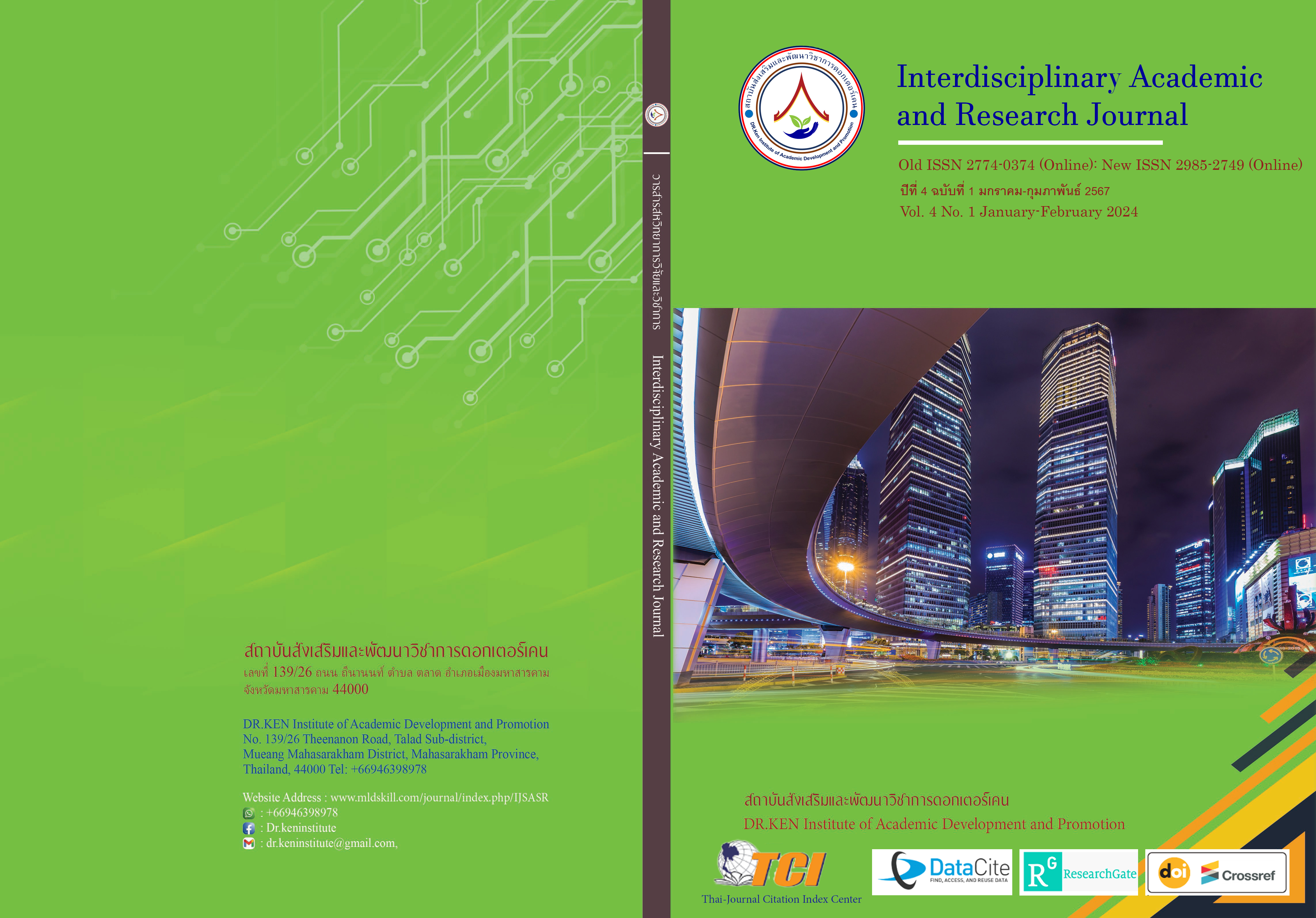A Construction of Reading Literacy Test for Grade 3 Students in Bangkok Metropolitan Administration School
DOI:
https://doi.org/10.60027/iarj.2024.273510Keywords:
Reading Literacy; , Classical Test Theory; , Item Response Theory; , Rhythmic Pacing StudentAbstract
Background and Aims: Important skills in learning Thai that can be applied effectively in daily life. But the skill that is necessary in everyday life is reading because reading is an important tool used for communication. Knowing how to practice regularly will help readers have a foundation for good reading. Both will help to gain expertise and have extensive knowledge. Thus, the objectives of this research are as follows; 1) to construct a reading literacy test and verify the quality of classical test theory 2) to verify the quality of item response theory 3) to study the reading literacy skill of grade 3 students in the Bangkok metropolitan administration school.
Methodology: The sample used in the research was 700 students in grade 3. The research instrument was a reading literacy test according to the PISA test that measures the competency to locate information, understand evaluate, and reflect. The reading literacy test consists of multiple-choice and essay a total of 15 questions. The verification of the quality of reading literacy tests by classical test theory and item response theory with the Generalized Partial Credit Model (G-PCM) and verified reading literacy by mean and standard deviation.
Results: (1) Reading literacy test consisted of 5 situations and a total of 60 questions showed the content validity was in the range of 0.80-1.00 and the quality by classical test theory showed the difficulty was in the range of 0.43 to 0.79, the discriminant was in the range of 0.30 to 0.75 and reliability was in the range 0.89 and 0.87. (2) The quality of reading literacy test by item response theory with the G-PCM model showed that the discrimination parameter (αi) was in the range of 0.95 to 2.50. the difficulty parameter (δij) δ1 was in the range of -0.64 to -0.08 and δ2 was in the range of 0.08 to 0.64. The item information of 3 competencies had the highest ability level (θ) equal to -1.2, -0.4, and -0.4, and the most information of 3 competencies had the highest ability level (θ) equal to -0.8, -0.8, and -0.43. And (3) Results of the study of reading literacy showed that most of the students have a high level of reading literacy.
Conclusion: The tests created were appropriate and of good quality according to the index of consistency (IOC) ranging from 0.80-1.00, with the difficulty of the test and the discriminatory power in the range of 0.43-0.79 and 0.30-0.75, respectively. In addition, Quality checking with the G-PCM model showed appropriate parameters and found that Grade 3 students had high reading proficiency in all competencies.
References
ชวาล แพรัตกุล. (2552). เทคนิคการวัดผล. พิมพ์ครั้งที่ 7, กรุงเทพฯ: มหาวิทยาลัยศรีนครินทรวิโรฒ.
บุญนิธิ คัสกุล. (2563). การสร้างแบบวัดทักษะที่จําเป็นสําหรับการถูกจ้างงานของนักเรียนชั้นมัธยมศึกษาตอนต้น. ปริญญานิพนธ์การศึกษามหาบัณฑิต: มหาวิทยาลัยศรีนครินทรวิโรฒ.
ล้วน สายยศ และอังคณา สายยศ. (2543). เทคนิคการวัดผลการเรียนรู้. กรุงเทพฯ: สุวีริยาสาส์น.
วิษณุ ทรัพย์สมบัติ. (2564). แนวทางดําเนินงานประเมินคุณภาพผู้เรียน (NT) ป.3 และการประเมินความสามารถด้านการอ่านของผู้เรียน (RT) ป.1 ปีการศึกษา 2563. Retrieved from: https://bet.obec.go.th/wp-content/uploads/2021/02/NT-RT-2563.pdf
ศิริชัย กาญจนวาสี. (2555). ทฤษฎีการทดสอบแนวใหม่. พิมพ์ครั้งที่ 4, กรุงเทพฯ: จุฬาลงกรณ์มหาวิทยาลัย.
สถาบันภาษาไทย. (2559). หลักการสะกดค่าภาษาไทย. สำนักวิชาการและมาตรฐานการศึกษา, สำนักงานคณะกรรมการการศึกษาขั้นพื้นฐาน กระทรวงศึกษาธิการ.
สถาบันส่งเสริมการสอนวิทยาศาสตร์และเทคโนโลยี. (2555). ตัวอย่างข้อสอบการประเมินผลนานาชาติ PISA: การอ่าน. กรุงเทพฯ: ห้างหุุ้นส่วนจํากัดอรุณการพิมพ์.
สถาบันส่งเสริมการสอนวิทยาศาสตร์และเทคโนโลยี. (2563). ข้อค้นพบจาก PISA 2018: ปัจจัยที่มีความสัมพันธ์ กับผลการประเมินด้านการอ่าน. Retrieved from: https://pisathailand.ipst.ac.th/issue-2020-55/
สํานักงานราชบัณฑิตยสภา. (2562). พจนานุกรมศัพท์ศึกษาศาสตร์ร่วมสมัย ชุดความฉลาดรู้= (Literacy) ฉบับราชบัณฑิตยสภา. กรุงเทพฯ: สํานักงานราชบัณฑิตยสภา.
สิริพัชร์ เจษฎาวิโรจน์. (2541). การสอนภาษาไทยระดับประถมศึกษา. กรุงเทพฯ: สํานักพิมพ์มหาวิทยาลัย รามคําแหง.
Muraki, E. (1992). A generalized partial credit model: Application of an EM algorithm. Applied Psychological Measurement, 16, 159–176.
Muraki, E. (1993). INFORMATION FUNCTIONS OF THE GENERALIZED PARTIAL CREDIT MODEL. ETS Research Report Series. https://doi.org/10.1002/j.2333-8504.1993.tb01538.x
OECD. (2017). PISA 2015 Assessment and Analytical Framework: science, reading, mathematics, financial literacy, and collaborative problem-solving. Retrieved from http://doi.org/10.1787/19963777.
Downloads
Published
How to Cite
Issue
Section
License
Copyright (c) 2024 Kanyakit Silapacharoen, Panida Sakutanak, Manaathar Tulmethakaan

This work is licensed under a Creative Commons Attribution-NonCommercial-NoDerivatives 4.0 International License.
Copyright on any article in the Interdisciplinary Academic and Research Journal is retained by the author(s) under the under the Creative Commons Attribution-NonCommercial-NoDerivatives 4.0 International License. Permission to use text, content, images, etc. of publication. Any user to read, download, copy, distribute, print, search, or link to the full texts of articles, crawl them for indexing, pass them as data to software, or use them for any other lawful purpose. But do not use it for commercial use or with the intent to benefit any business.
















.png)


